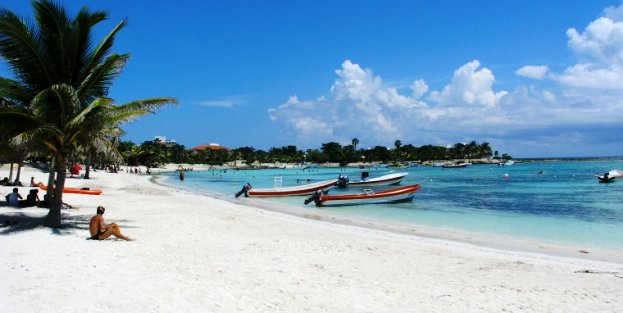Akumal Bay is known for its assorted species of sea turtles which use the beaches for breeding, feeding and rearing their young. This provides an optimal opportunity to see the animals in their natural habitat, including the many different species of fish and plant life.
Snorkeling and scuba diving are perhaps the favorite activities to pursue during a trip to Akumal, but snorkeling is a less physically demanding and technical option. With a brief instruction course and a smart location choice, snorkeling is very easy for even first-time novices.

One popular location for snorkeling in Akumal is the Yal-ku lagoon. This location is an extremely rare environment where fresh water meets with salt water from the sea. The combination of the two types of water is called a “halocline” effect.
Only very specific species can live and thrive in this halocline lagoon, and the mixture of salt and fresh water supplies creates an changed appearance of the water itself. Many fish found in this area are not found anywhere else in the world, and have been shown on many travel channel specials in recent years.
Casa Cenote is a lagoon featuring mangroves and bright fish displays. Many snorkelers find the fossils in Cenote at Dosojos quite worth while for a day of exploration. Many of the fossils seen at Dosojos date back to original civilizations that once occupied the area.
Snorkel lessons are always a good idea forfirst-timers prior to going to one of these sites. Although the activity is simple, some find that they are uncomfortable with the equipment or unsure how to best view the underwater scenery while safely using the snorkel.
A fun activity for locals and tourists alike is night snorkeling. Typically, a light is used in conjunction with traditional snorkeling equipment for this activity.
Many fish which are not observed during daylight hours can be observed when snorkeling after nightfall. This is usually because they are night-feeders or resting during the day.
The octopus is a perfect example of this phenomenon. Octopuses only come out to feed at nighttime, and change color when a light is focused on them. Virtually all of the life seen at night are safe for snorkelers, so night snorkeling is a safe activity also.
Plant life and some types of fish are also luminescent after dark. This creates greenish lights shining either continuously or flashing at night – quite a view for one who is only accustomed to snorkeling during the day!
